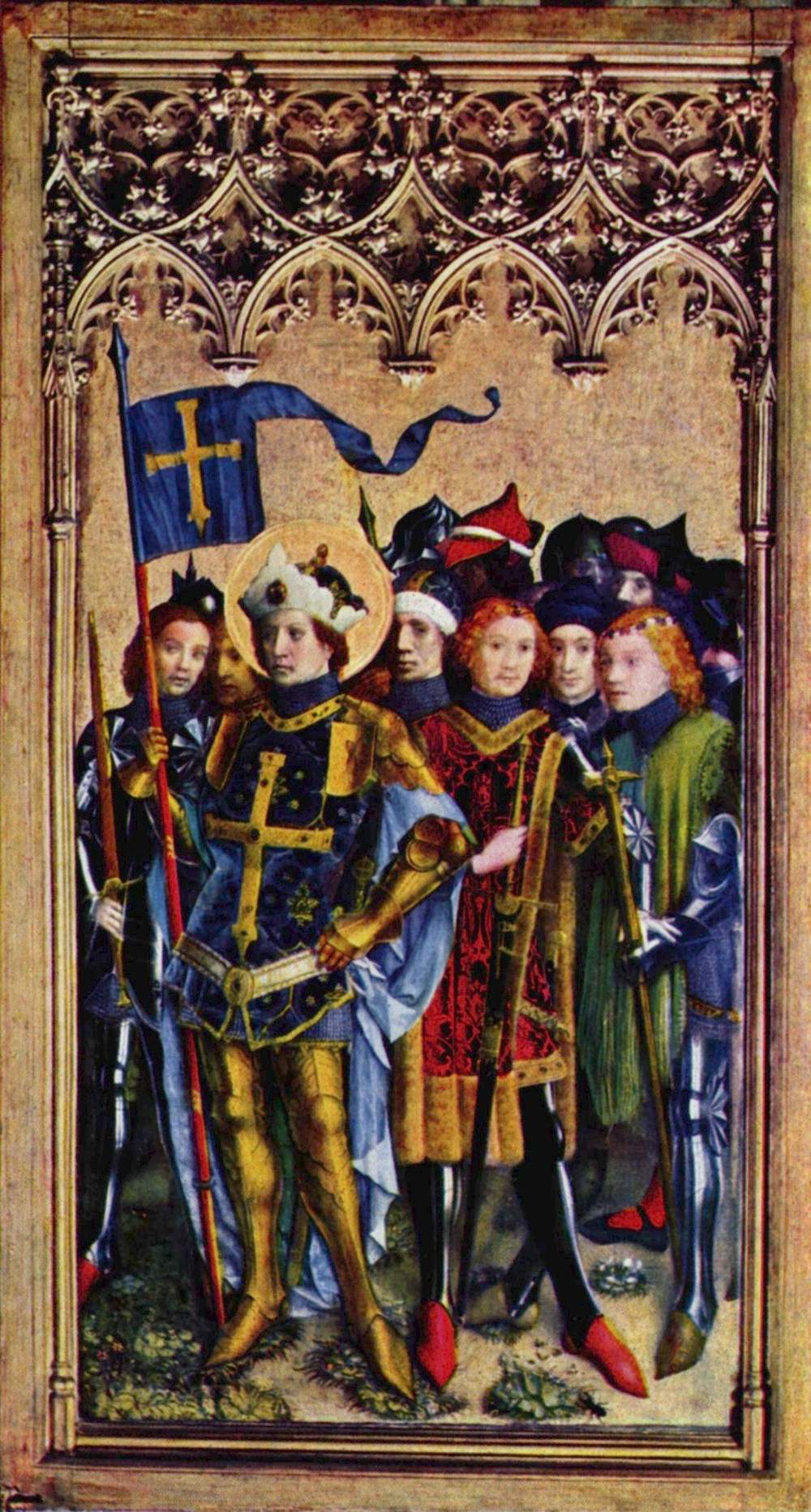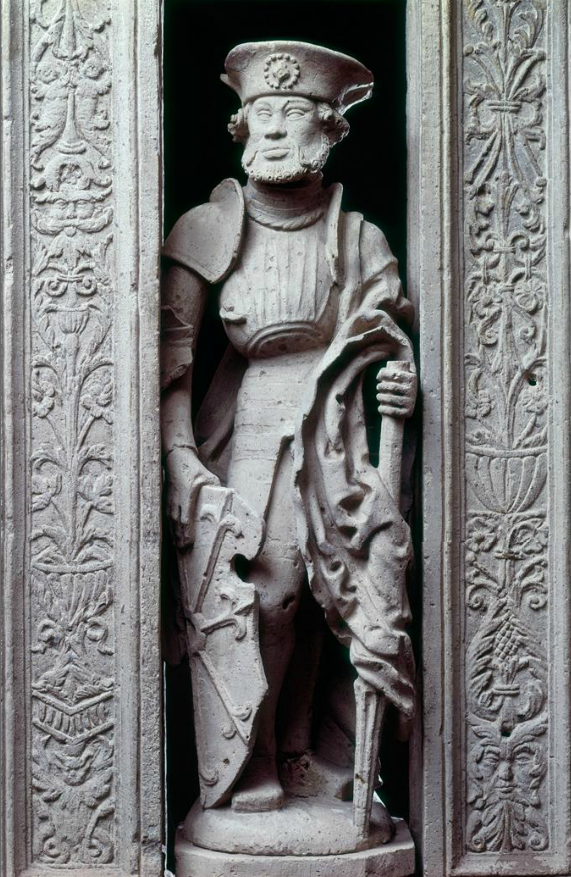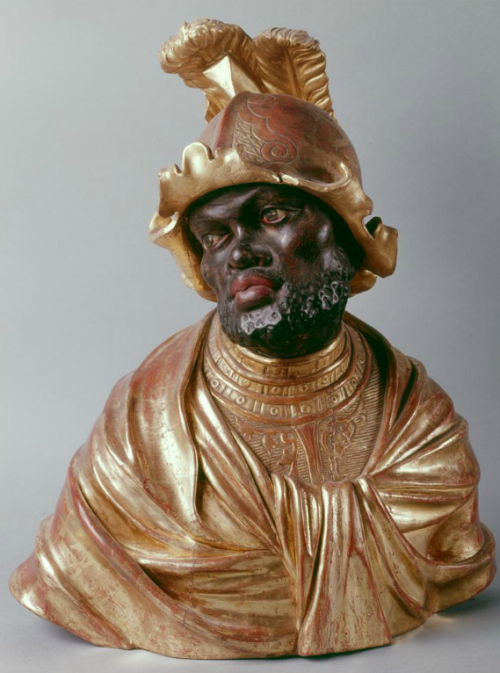Saint Maurice was not the only Black figure of veneration in medieval and Renaissance Germany. As the case of Gregory the Moor (Gregorius Maurus) in Cologne illustrates, shifts in religious symbolism were tightly intertwined with imperial and ecclesiastical politics.
Like Maurice’s, Gregory’s story involved the Theban Legion’s refusal to persecute Christians and subsequent execution. To cement local political alliances and draw attention to their church, leaders in Cologne helped Gregory of Tours write a new version of the legend in the sixth century; he placed the Legion’s martyrdom in their city, where a cult to Maurice and the Legion was already established. The legend took on further local inflections over the centuries. Rather than Maurice, the Legion was led by St. Gereon, the patron saint of soldiers, whose bones were “discovered” in the church that bore his name and whose cult supported a dramatic expansion of the church between the eleventh and fourteenth centuries. When the remains of other members of the Theban Legion were similarly discovered in the area, some were brought to the church, most notably those of Gregory the Moor (Gregorius Maurus), identified as one of Gereon’s lieutenants. Gregory was buried with great ceremony alongside Gereon, and they became co-patrons of both the church and the city as a whole. Nevertheless, Gregory never became an object of wider devotion outside the church.
Gregory was originally depicted as a white man, but around the same time that St. Maurice became Black in many places (although not in Cologne!), so, too, did Gregory. As the images illustrate, he was modelled on Maurice but also could take on a variety of other exotic characteristics. It is clear that Cologne leaders sought to take advantage of the symbolism of a Black figure but without tying themselves to Maurice’s powerful patrons. As with the celebration of the Three Magi, including the Black Magus, the veneration of Gregory signalled a clear resistance to the imagery coming out of Magdeburg.
Jeff Bowersox and Julia Alcamo
Deutsch
Sources:
- Anonymous German Artist, Reliquary of a Black Saint (Maurice or Gregory) (ca. 1350), The Image of the Black in Western Art Research Project and Photo Archive, ©W.E.B. Du Bois Institute for African and African American Research, Harvard University.
- Master of the Gereon Altar, Marienaltar mit Heiligen (ca. 1410-1430), Berlin, Staatliche Museen zu Berlin – ©Preußischer Kulturbesitz, Gemäldegalerie, Inv.-Nr. 1627A, Zugang 1909.
- Stefan Lochner, Adoration (ca. 1440), Kölner Dom. Via Wikimedia Commons.
- Anonymous German Artist, Saint Gregory (ca. 1520), Katholische Pfarrkirche St. Gereon, Cologne, painted wing of a lost altarpiece. The Image of the Black in Western Art Research Project and Photo Archive, ©W.E.B. Du Bois Institute for African and African American Research, Harvard University.
- Anton Woensam von Worms, Two Wings of an Altar (ca. 1530s): Hll. Anno und Gregor der Mohr and Hll. Stephanus und Mauritius, ©Bayerische Staatsgemäldesammlung — Alte Pinakothek München, Inv.-Nr. 1474, 1475.
- Anonymous German Artist, Saint Gregory the Moor (ca. 1530s). The Image of the Black in Western Art Research Project and Photo Archive, ©W.E.B. Du Bois Institute for African and African American Research, Harvard University.
- Hermann Kessel, Reliquary Bust of Saint Gregory (1683), Katholische Pfarrkirche St. Gereon, Cologne, Treasury. The Image of the Black in Western Art Research Project and Photo Archive, ©W.E.B. Du Bois Institute for African and African American Research, Harvard University.

Gregory the Moor (ca. 1350-1683) by Jeff Bowersox and Julia Alcamo is licensed under a Creative Commons Attribution-ShareAlike 4.0 International License. Permissions beyond the scope of this license may be available at https://blackcentraleurope.com/who-we-are/.






